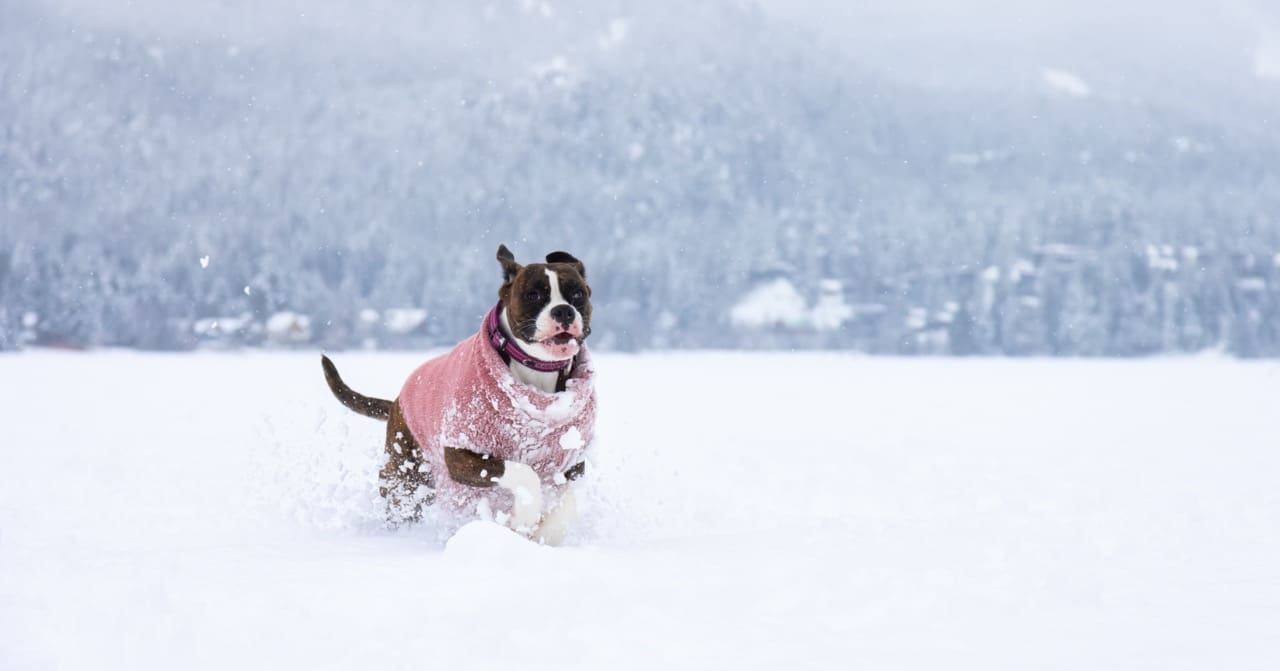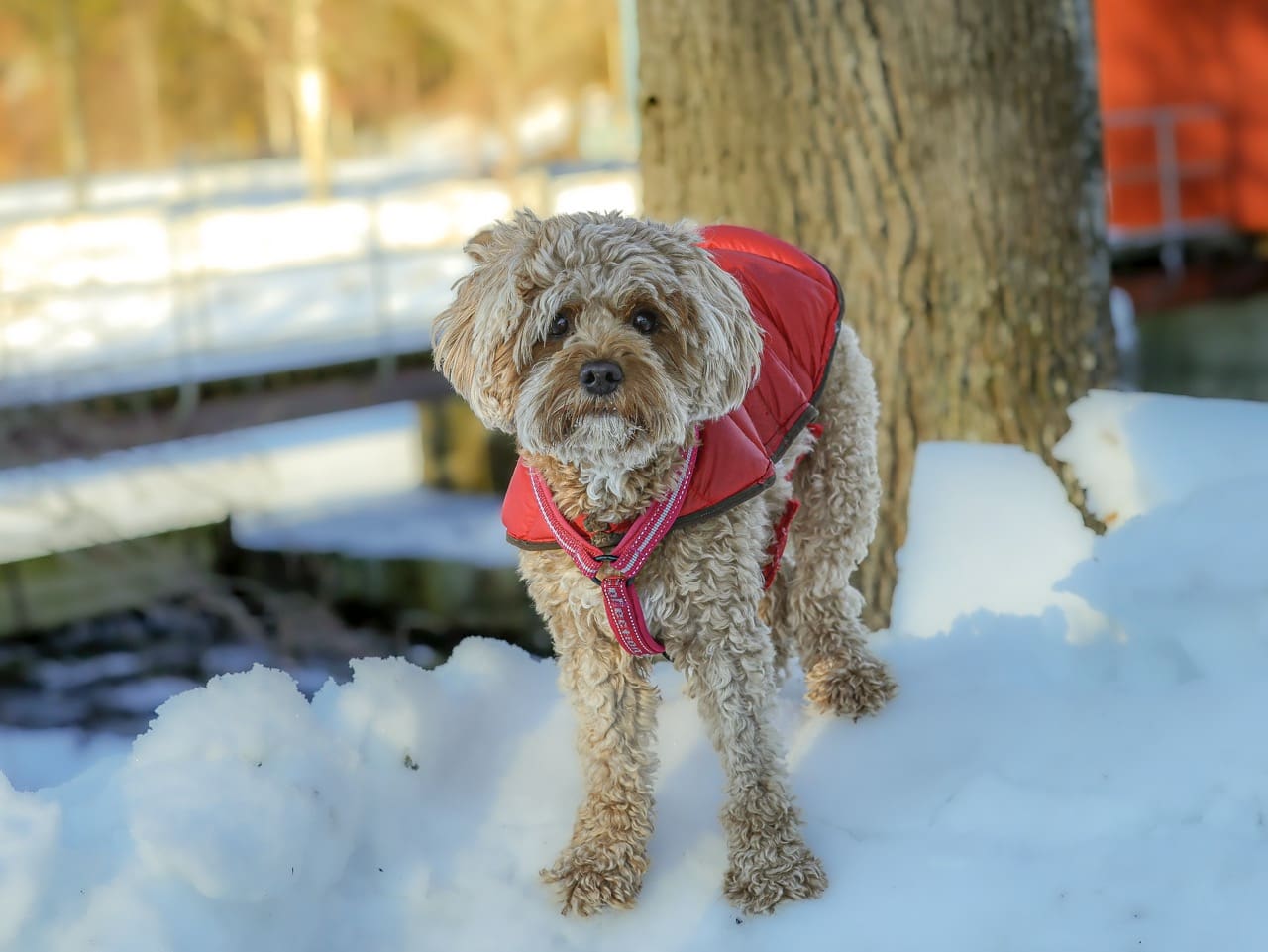Winter’s here, but that doesn’t mean your dog has to miss out on their daily dose of outdoor adventure, but how do you keep your dog warm on winter walks? With a little preparation and awareness, you can keep your furry friend warm, safe, and happy on those chilly winter walks.
Not all dogs are created equal when it comes to cold tolerance.
Size and Breed:
Smaller dogs, such as Chihuahuas, Yorkshire Terriers, and Pugs, have a higher surface area to volume ratio, which means they lose heat more quickly. They also have less body fat to insulate them from the cold.
Breeds with short coats, such as Greyhounds, Whippets, and Dobermans, have less protection from the cold. Their thin coats don’t provide much insulation, and they can easily get chilled.
Larger breeds, such as Great Danes, Saint Bernards, and Newfoundlands, have more body mass to retain heat. However, they can still feel the cold if they are not acclimated to it.
Breeds with short noses, such as Bulldogs, Pugs, and Boston Terriers, have difficulty breathing in cold, dry air. This can lead to respiratory problems, such as coughing and sneezing.


Puppies are especially vulnerable to the cold due to their immature thermoregulation systems. Their bodies have not yet developed the ability to efficiently regulate their body temperature, making them more susceptible to hypothermia. Additionally, their thin coats provide little insulation, further increasing their risk of getting cold. It is important to limit puppies’ exposure to cold temperatures and to provide them with a warm, dry place to rest.
As dogs age, their ability to regulate their body temperature may decline. This is due to a variety of factors, including decreased muscle mass, reduced circulation, and changes in their metabolism. Additionally, senior dogs may have underlying health conditions that make them more sensitive to the cold, such as arthritis or kidney disease. It is important to monitor senior dogs closely during cold weather and to provide them with a warm, comfortable place to rest.
Certain health conditions can make dogs more susceptible to the cold. For example, dogs with diabetes may have difficulty regulating their blood sugar levels in cold weather, which can lead to hypoglycemia. Dogs with hypothyroidism may have a slower metabolism, making it difficult for them to generate heat. Dogs with kidney disease may have difficulty eliminating waste products, which can lead to dehydration and electrolyte imbalances, both of which can make them more sensitive to the cold. It is important to consult with your vet to determine if your dog’s health condition may make them more susceptible to the cold and to discuss appropriate precautions.
If your dog isn’t built for the Arctic blast, consider investing in some winter wear:
A well-fitting coat provides an extra layer of insulation, especially for short-haired breeds.
These protect paws from icy surfaces, salt, and snow build-up, which can cause irritation and even chemical burns.
Winter days are shorter and darker, so make sure you and your dog are easily seen.
Collars, leashes, and coats with reflective elements increase visibility to cars and cyclists.
Attach a light to your dog’s collar or leash for added safety in low-light conditions.
Don’t let darkness be an excuse to skip the scooping!
A flashlight or head torch will help you spot those hidden landmines.
While there’s no magic temperature, consider these factors:
The wind can make it feel much colder than the actual temperature. The stronger the wind, the colder it will feel. This is because the wind carries heat away from the body, making it harder for the body to stay warm.
Wet fur loses its insulating properties, making it easier for your dog to get cold. If your dog gets wet in the snow or rain, it’s important to dry them off as soon as possible.


Here are some additional tips for keeping your dog safe and warm in the winter:
Don’t take them out for long walks in freezing temperatures right away. Start with short walks and gradually increase the duration as the weather gets colder.
Dogs can become dehydrated in cold weather, so it’s important to make sure they have access to fresh water at all times.
Extra Winter Walk Tips:
Remove snow, ice, and salt from your dog’s paws after each walk.
Bring water for your dog, especially on longer walks.
By following these tips, you can ensure your furry friend stays warm, safe, and happy on all your winter adventures! Winter walks can be a great way to bond with your dog and enjoy the fresh air together. Just be sure to take the necessary precautions to keep your dog safe and comfortable.